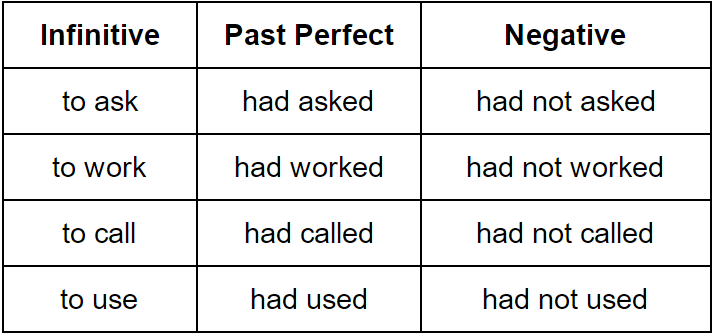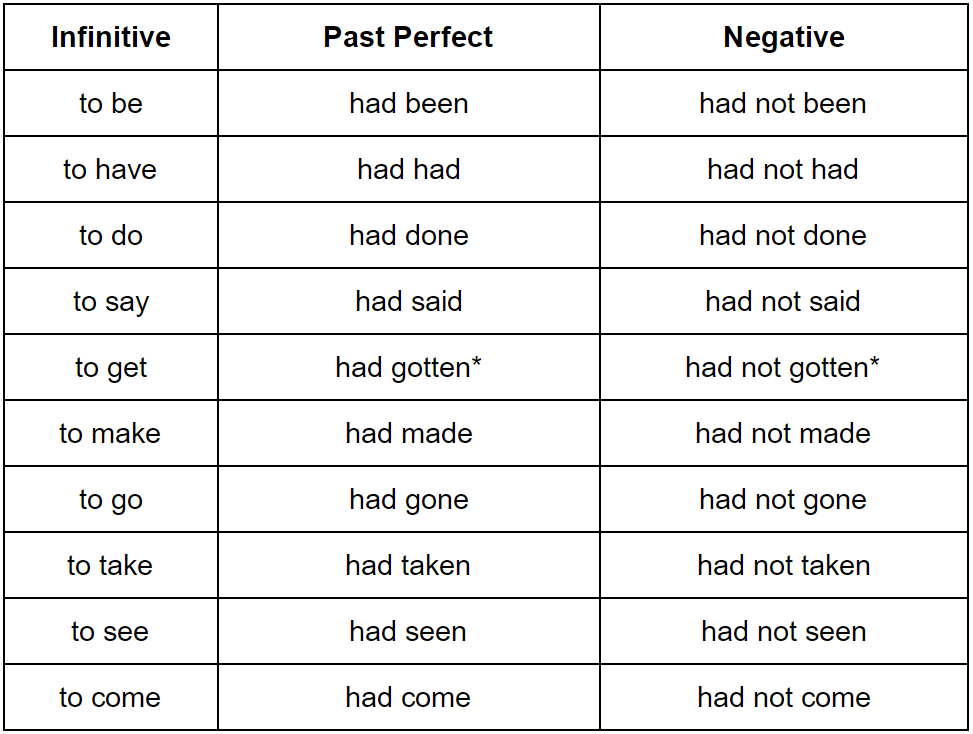PAST PERFECT TENSE
NINTH GRADE
I. GRAMMAR
The past perfect, also called the pluperfect, is a verb tense used to talk about actions that were completed before some point in the past.
We were shocked to discover that someone had graffitied “Tootles was here” on our front door. We were relieved that Tootles had used washable paint.
The past perfect tense is for talking about something that happened before something else. Imagine waking up one morning and stepping outside to grab the newspaper. On your way back in, you notice a mysterious message scrawled across your front door: Tootles was here. When you’re telling this story to your friends later, how would you describe this moment? You might say something like. Example:
I turned back to the house and saw that some someone named Tootles had defaced my front door!
The Past Perfect Formula
The formula for the past perfect tense is had + [past participle]. It doesn’t matter if the subject is singular or plural; the formula doesn’t change.
When to Use the Past Perfect
When you’re talking about some point in the past and want to reference an event that happened even earlier, using the past perfect allows you to convey the sequence of the events. It’s also clearer and more specific. Consider the difference between these two sentences. Example:
We were relieved that Tootles used washable paint. We were relieved that Tootles had used washable paint.
It’s a subtle difference, but the first sentence doesn’t tie Tootles’s act of using washable paint to any particular moment in time; readers might interpret it as “We were relieved that Tootles was in the habit of using washable paint.” In the second sentence, the past perfect makes it clear that you’re talking about a specific instance of using washable paint.
Another time to use the past perfect is when you are expressing a condition and a result. Example:
If I had woken up earlier this morning, I would have caught Tootles red-handed.
The past perfect is used in the part of the sentence that explains the condition (the if-clause).
Most often, the reason to write a verb in the past perfect tense is to show that it happened before other actions in the same sentence that are described by verbs in the simple past tense. Writing an entire paragraph with every verb in the past perfect tense is unusual.
II. When Not to Use the Past Perfect
Don’t use the past perfect when you’re not trying to convey some sequence of events. If your friends asked what you did after you discovered the graffiti, they would be confused if you said. Example
I had cleaned it off the door.
They’d likely be wondering what happened next because using the past perfect implies that your action of cleaning the door occurred before something else happened, but you don’t say what that something else is. The “something else” doesn’t always have to be explicitly mentioned, but context needs to make it clear. In this case there’s no context, so the past perfect doesn’t make sense.
How to Make the Past Perfect Negative
Making the past perfect negative is simple! Just insert not between had and [past participle].
We looked for witnesses, but the neighbors had not seen Tootles in the act. If Tootles had not included his own name in the message, we would have no idea who was behind it.
How to Ask a Question
The formula for asking a question in the past perfect tense is had + [subject] + [past participle].
Had Tootles caused trouble in other neighborhoods before he struck ours?
Common Regular Verbs in the Past Perfect Tense

Common Irregular Verbs in the Past Perfect Tense

*The past participle of “to get” is “gotten” in American English. In British English, the past participle is “got.”
IV. LET'S PRACTICE WITH THIS STORY
V. LISTEN AND PRACTICE THE NEXT SONG DON´T FORGET TO CHECK THE VOCABULARY
VI . IT´S TIME TO PRACTICE
Read the next story and answer the following questions . Use the past perfect tense.
Where were they? What did they do? What had they done?
Last weekend, Mark and Trisha on a date. Mark took Trisha to the golf course. Mark loved to golf. He had learned to golf as a child. He had even played on a team in high school.
Before that day. Trisha had never golfed She did no know how to hold the golf club. She did not know the rules.
Mark taught Trisha how to play . After Trisha had learned the basics, she hit the ball. It was a good hit! Mark had taught Trisha well.
1. When had Mark learned to golf?
2. When had he played on a team?
3. Before that day, had Trisha ever golfed?
4. When disTrisha finally hit her first ball?
5. Had Mark taught her well?

No hay comentarios:
Publicar un comentario